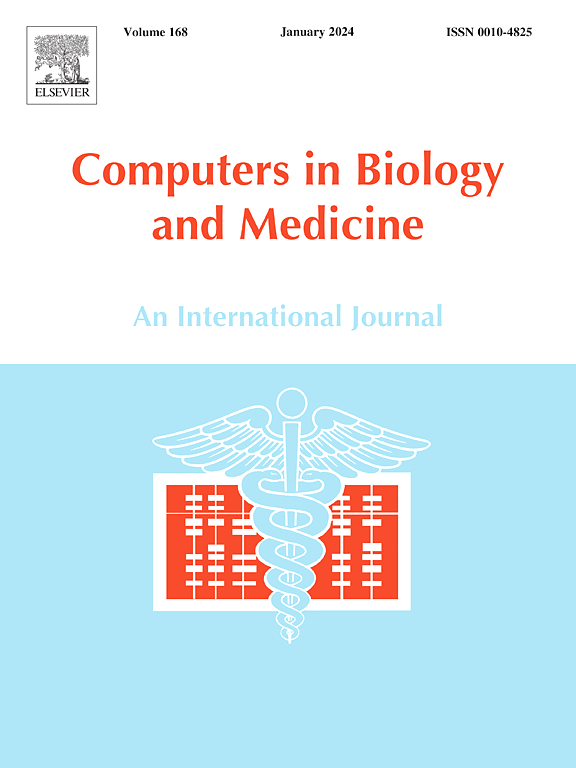Patient-specific investigation into plaque rupture risk due to catheter tracking during TAVR
IF 6.3
2区 医学
Q1 BIOLOGY
引用次数: 0
Abstract
Catheter delivery during transcatheter aortic valve replacement (TAVR) may result in plaque damage in patients with high plaque burden levels. Primarily, catheter tracking performance is measured through in-vitro methods, such as trackability testing, but these cannot account for the in vivo conditions that are dictated by anatomical variation and tissue properties. This study aims to apply patient-specific finite element (FE) modelling to investigate the potential stresses and contact pressures experienced in the aortic wall and by plaques during catheter tracking for TAVR delivery. This study utilised two patient-specific anatomies, derived from pre-TAVR CT imaging, to develop solid aorta and plaque models. A parameter study of plaque burden (low, moderate and high) and plaque stiffness (soft, intermediate and stiff) revealed a risk of plaque rupture only for one of the patients when they had a high plaque burden of intermediate stiffness. Highly stiff calcified nodules lead to very high plaque tissue stresses (6–9 MPa), but the rupture stress threshold for these plaque types remains unknown. We also observe no difference in catheter reaction forces between patients regardless of burden level or plaque stiffness, except for Patient 2's high plaque burden with stiff plaque variation.
TAVR期间导管追踪导致斑块破裂风险的患者特异性研究
经导管主动脉瓣置换术(TAVR)中导管输送可能导致斑块高负荷水平患者的斑块损伤。首先,导管跟踪性能是通过体外方法测量的,例如可追踪性测试,但这些不能解释由解剖变异和组织特性决定的体内条件。本研究旨在应用患者特定的有限元(FE)模型来研究导管追踪TAVR输送过程中主动脉壁和斑块所经历的潜在应力和接触压力。本研究利用两种患者特异性解剖结构,源自tavr前CT成像,建立实体主动脉和斑块模型。一项关于斑块负担(低、中、高)和斑块硬度(软、中、硬)的参数研究显示,当斑块负担较高时,只有一名患者有斑块破裂的风险。高度僵硬的钙化结节导致非常高的斑块组织应力(6 - 9mpa),但这些斑块类型的破裂应力阈值仍然未知。我们还观察到,除了患者2的高斑块负荷伴斑块硬度变化外,无论负荷水平或斑块硬度如何,患者之间的导管反作用力均无差异。
本文章由计算机程序翻译,如有差异,请以英文原文为准。
求助全文
约1分钟内获得全文
求助全文
来源期刊

Computers in biology and medicine
工程技术-工程:生物医学
CiteScore
11.70
自引率
10.40%
发文量
1086
审稿时长
74 days
期刊介绍:
Computers in Biology and Medicine is an international forum for sharing groundbreaking advancements in the use of computers in bioscience and medicine. This journal serves as a medium for communicating essential research, instruction, ideas, and information regarding the rapidly evolving field of computer applications in these domains. By encouraging the exchange of knowledge, we aim to facilitate progress and innovation in the utilization of computers in biology and medicine.
 求助内容:
求助内容: 应助结果提醒方式:
应助结果提醒方式:


